Tag: baking soda’
Paper Bag Volcano
- by KitchenPantryScientist
Last spring, I went into my daughter’s first grade classroom to do the famous volcano experiment that involves mixing baking soda (sodium bicarbonate) and vinegar (acetic acid). Unfortunately, with our hectic schedule there was no time to create a “work of art” volcano from paper mache or clay. So, we made one out of a paper bag. It was a smashing success.
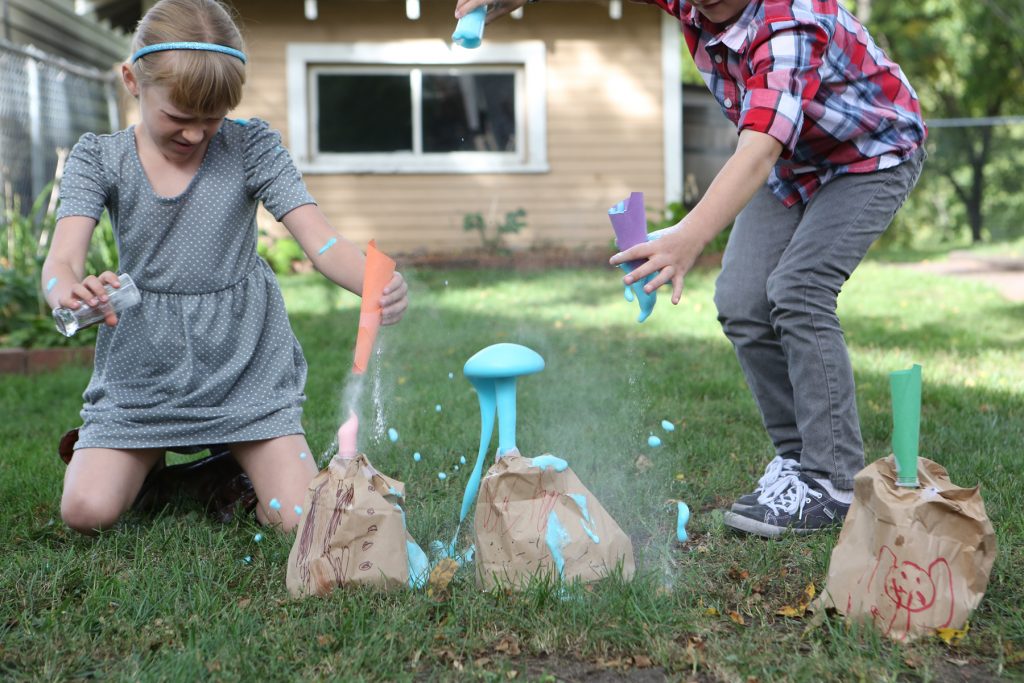
Paper bag volcanoes (image from Kitchen Science Lab for Kids- Quarry Books 2014
To make your own paper bag volcano, you’ll need a brown paper lunch sack (or a slightly bigger one like we used), an empty plastic water or soda bottle, a cup of vinegar, red food coloring and about a fourth of a cup of baking soda. *Cone coffee filters make great volcano cones too and work well on small plastic bottles!
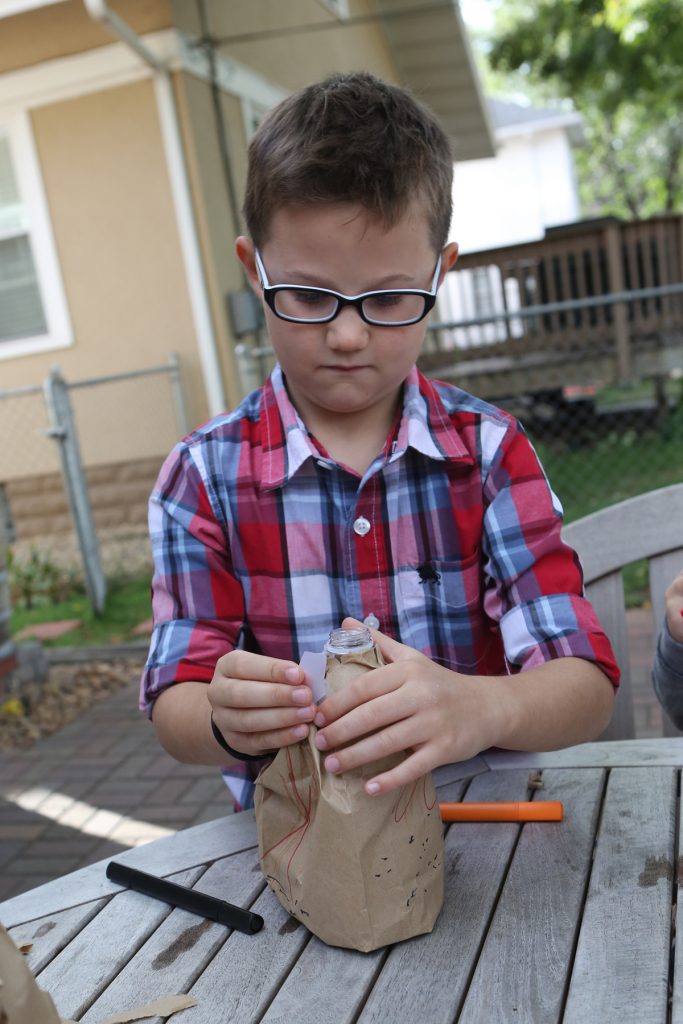
Remove the lid from the bottle, invert the brown bag over it, and tear open the bottom of the bag, along the flaps. Then, loosely tape the paper sack so that it fits around the mouth of the bottle. Don’t tape it to the bottle. If you like to draw, you can decorate the bag with markers.. We squashed and tore the bottom of the bag a little, to make it look more mountain-like.
Now, remove the bottle, fill it with the vinegar and add several drops of red food coloring for your “lava.” Place the bag bag over the bottle to hide the lava container.
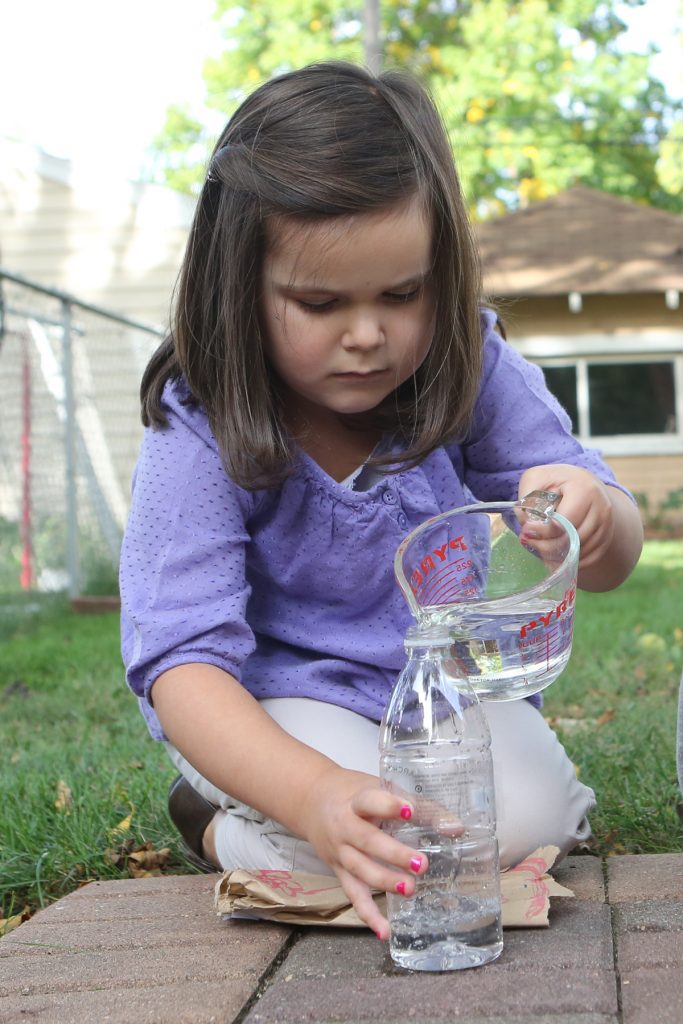
Place the volcano on a tray or something that will contain overflow and you’re ready for eruption!
Using a folded piece of paper, quickly dump all of the baking soda into your bottle to start the chemical reaction. You’ll see the volcano erupt as the baking soda combines with the vinegar to produce carbon dioxide gas, which is one of the gases spewed by real volcanoes.
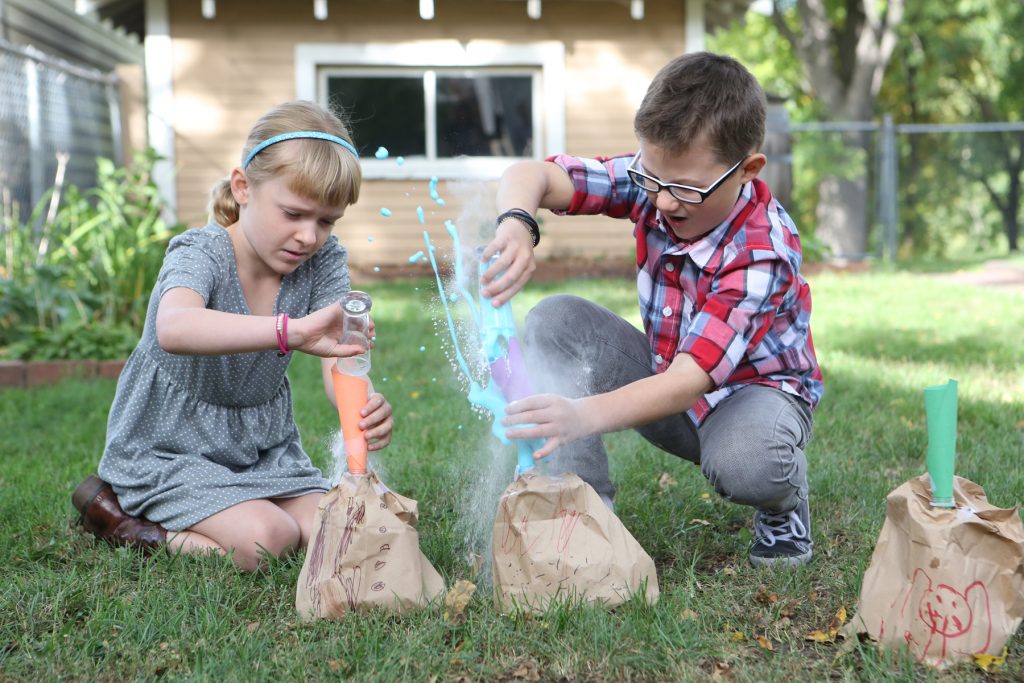
From Kitchen Science Lab for Kids (Quarry Books 2014)
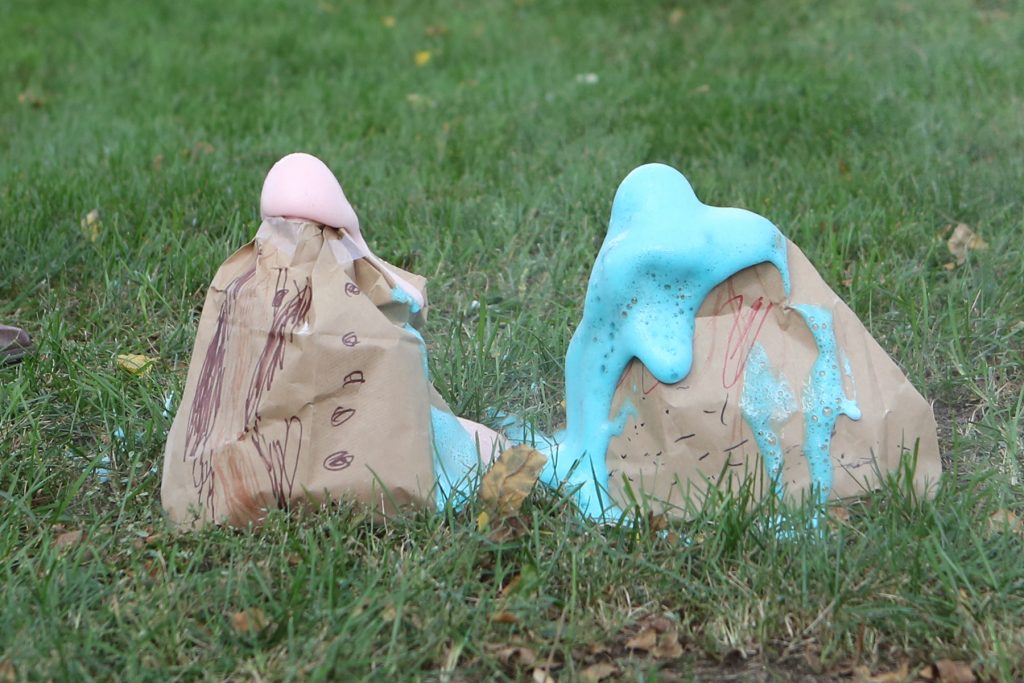
From Kitchen Science Lab for Kids (Quarry Books 2014)
If you liked this experiment, try making “fizzy balloons“ with the same ingredients (plus a balloon, of course!) If you want to learn more about carbon dioxide gas and the carbon cycle, here’s a link to a cool video from NASA that explains it using a banana and a chunk of coal.
Fizzy Balloon Outtake
- by KitchenPantryScientist
The kids and I got carried away and added a little too much baking soda and vinegar to our Fizzy Balloon experiment yesterday. Here’s what happened. 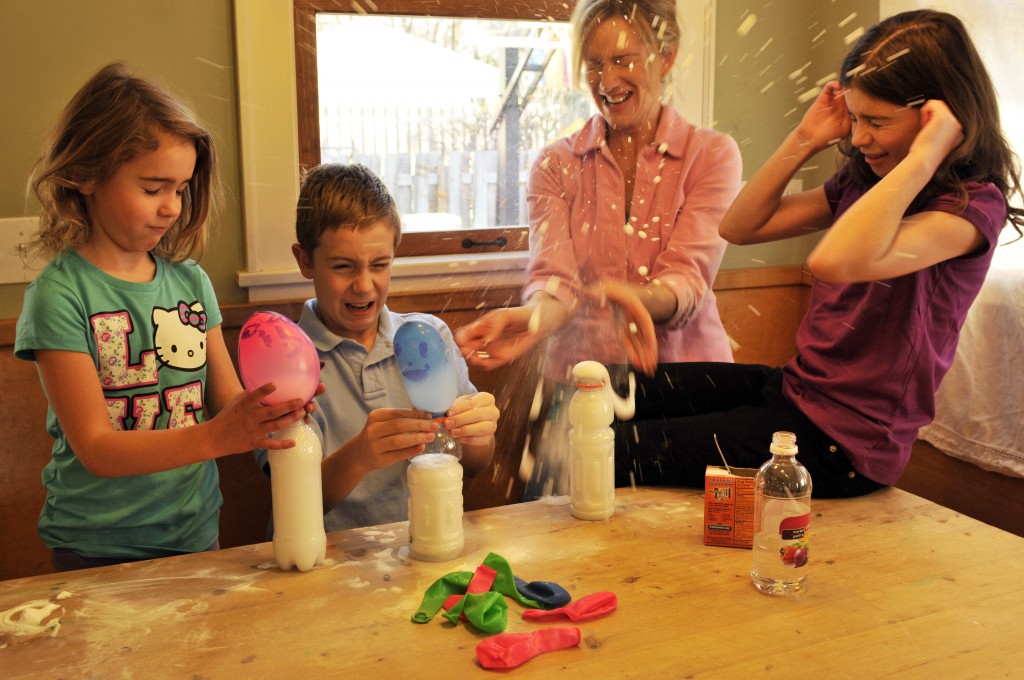 Pamela Diedrich of PD Photography was taking some pictures and captured the blast on film! Maybe next time we’ll measure a little more carefully.
Pamela Diedrich of PD Photography was taking some pictures and captured the blast on film! Maybe next time we’ll measure a little more carefully.
Fizzy Balloons
- by KitchenPantryScientist

I was never an enthusiastic chemistry student. That being said, I have to admit that chemical reactions can be lots of fun to watch as things turn colors, make bubbles, or smell different. They can change from liquids to solids and they can even explode.
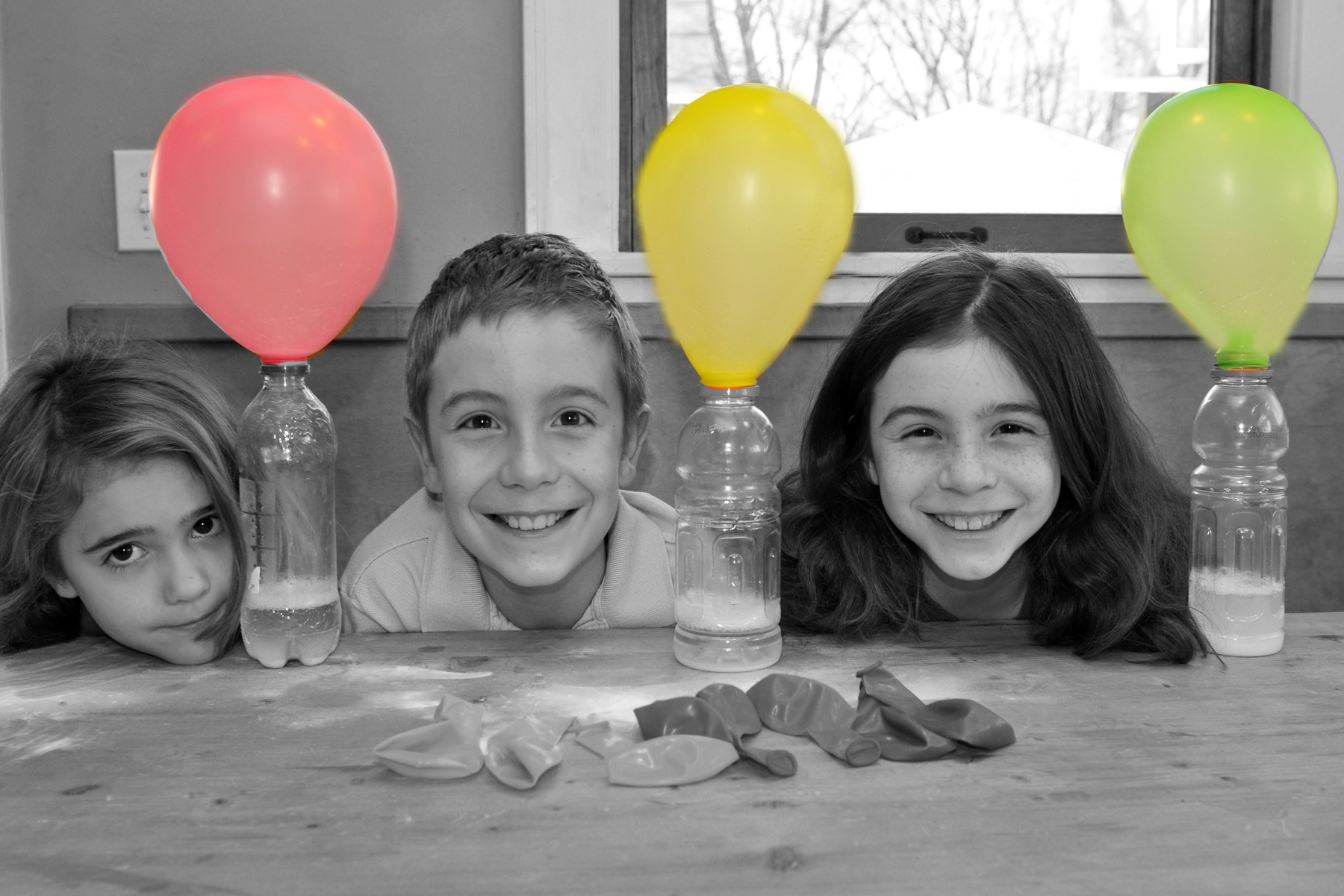
There are many fun, safe chemical reactions you can perform with your kids. I’d recommend having them put on safety goggles or sunglasses, if you have them, for most experiments where you mix things together. As you can see, my children aren’t wearing any eye protection for this project, but I did have them stand back to make sure the balloon wouldn’t explode the first time we did it. Just use common sense.

You will need: a balloon, an empty soda bottle, white vinegar, and baking soda. Put 1/4 to 1/2 cup vinegar into the soda bottle. Then, hold the mouth of the balloon open and have your child pour about a teaspoon of baking soda into the balloon. Shake the soda into the “bulb” or the main part of the balloon. Then, stretch the mouth of the balloon over the mouth of the bottle, trying to keep the main part of the balloon off to the side (so the soda isn’t dumped into the bottle right away.) Ask them what they think will happen when you mix the two things together. Finally, let your child shake the soda into the bottle, all at once.

Stand back and watch what happens!
If the seal is tight, which it should be, the reaction between the soda and the vinegar will form a gas that inflates the balloon. Our balloon was big enough that it didn’t explode, but if your balloon is over-inflating, simply take it off of the bottle. Just pay attention and you’ll be fine.
What happened?
Baking soda is a chemical called sodium bicarbonate. Vinegar is called acetic acid. These two chemicals react to form some different chemicals. One of these is carbon dioxide gas. This is called a chemical reaction. The gas is what inflates the balloon. We know a reaction is happening because we can see bubbles forming.
What else do your kids notice about the reaction? Have them record (or help them to record) what they see in their science notebooks. Older kids can draw what they see and then try to describe it. My kids loved it when I wrote down their descriptions for them before they could write. Have them touch the bottle. Does it feel warmer or cooler than room temperature? A temperature change is also a clue that a chemical reaction is occurring! They could even time how long it takes for the balloon to inflate.
My kids did this experiment three times and would have kept doing it all day. They thought it was pretty great. Give it a try! Put those budding brains to work!